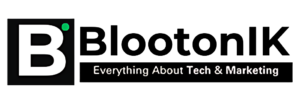Are You Thinking for starting your own digital product business but not sure where to begin? With the rise of online entrepreneurship, now is the perfect time to take action. Digital products have low overhead costs, can be sold globally, and continue to generate income even while you sleep. Let’s break down how you can successfully start a digital product business from scratch.
What Is a Digital Product Business?
First things first: To start digital product business revolves around selling intangible goods like e-books, online courses, printables, software, and more. These products are created once and sold repeatedly, making them highly scalable.
Examples of Popular Digital Products:
- E-books: Guides or how-to books on topics you’re passionate about.
- Online Courses: In-depth training on subjects like photography, web development, or fitness.
- Printables: Planners, worksheets, or digital artwork that people can download and print.
- Software or Apps: Tools that solve specific problems for users.
- Membership Sites: Platforms offering exclusive content, like workout videos or business coaching.
Why To Start Digital Product Business?
Starting a digital product business has many advantages:
- Low Initial Investment: No need to worry about inventory or shipping costs.
- Scalability: Sell your product to an unlimited number of people without extra effort.
- Passive Income: Once created, digital products can generate revenue passively.
- Location Independence: Run your business from anywhere with an internet connection.
Hook: Imagine earning money while you sleep. That’s the power of a well-established digital product business!
Steps to Start
Ready to jump in? Here’s a step-by-step guide to get you started:
1. Identify Your Niche and Audience To Start Digital product Business
To succeed, you must understand what problems your product solves and who it’s for. Research your audience’s needs, interests, and pain points.
- Tip: Use platforms like Reddit, Quora, or Facebook groups to see what questions people are asking.
Example: If you’re a fitness expert, your niche could be creating workout plans for busy professionals.
2. Choose the Right Digital Product to Sell
Select a product that aligns with your expertise and has a market demand. Consider these questions:
- What skills do I have that can be transformed into a digital product?
- What problems can I solve for my target audience?
Product Ideas:
- A photographer could sell presets or editing tutorials.
- A developer could create plugins or coding courses.
- A teacher could offer educational printables for parents or fellow educators.
3. Validate Your Product Idea
Before spending time creating your product, validate it to ensure there’s a market. Here’s how:
- Pre-Sell: Announce your product on social media and gauge interest through pre-orders.
- Survey Your Audience: Ask your followers what they’d be willing to pay for.
- Market Research: Check out similar products and analyze their popularity.
Hook: Validation saves you from the heartbreak of launching a product no one wants!
Creating Your Digital Product
Now that your idea is validated, it’s time to create!
1. Create High-Quality Content
Whether it’s an e-book or an online course, quality is key. Invest time in creating a polished and valuable product. If you’re not skilled in design, consider hiring a freelancer from platforms like Upwork or Fiverr.
Tip: Remember to make your content visually appealing, especially for products like e-books or printables.
2. Choose a Platform to Sell Your Product
Your sales platform can make or break your business. Here are some popular options:
- E-commerce Platforms: Use Shopify, Gumroad, or Etsy for simple sales management.
- Course Platforms: If selling courses, consider Teachable, Thinkific, or Kajabi.
- Your Website: If you prefer full control, set up an online store using WordPress and WooCommerce.
Pro Tip: Make sure your website is optimized for mobile users!
Marketing Your Digital Product Business
Marketing is essential to reach your audience and boost sales. Here are some effective strategies:
1. Leverage Content Marketing To Start Digital Product Business
Create blogs, videos, or podcasts around your product’s topic to attract potential customers. Use SEO techniques to rank higher in search results.
Example: If you’re selling a photography e-book, write blog posts about “Photography Tips for Beginners.”
2. Use Email Marketing
Build an email list and engage with your subscribers regularly. Offer valuable content and promote your product when it’s ready to launch.
- Lead Magnet: Offer a freebie, like a mini-guide or printable, to grow your email list.
- Email Sequence: Create a series of automated emails to nurture your audience and introduce your product.
Tip: Personalize your emails to increase open rates and engagement.
3. Promote on Social Media
Choose platforms where your target audience is active. Post engaging content, use hashtags, and collaborate with influencers to boost visibility.
- Instagram: Share behind-the-scenes content or customer testimonials.
- Facebook: Create a community group to engage directly with your audience.
- LinkedIn: Post content that showcases your expertise, especially if your product is business-related.
Hook: Social media is a game-changer. Don’t just sell—engage and build a community!
Final Thoughts on Starting This Business
Starting a digital product business can be incredibly rewarding, but it takes time, research, and dedication. Focus on solving real problems for your audience and delivering high-quality content. With the right strategy, you’ll be on your way to creating a sustainable source of income.
Ready to launch your digital product business? Take action today, and remember: progress, not perfection, is the goal!
I hope this guide simplifies your journey and inspires you to get started. Got questions or need help with your idea? Leave a comment below—I’d love to hear from you!
Read More here —>>
1). Career in Digital Marketing| Your Path to a Growing Industry
2). Affiliate Marketing for Beginners
3). How to Run Google Ads | A Step-by-Step Guide for Beginners











